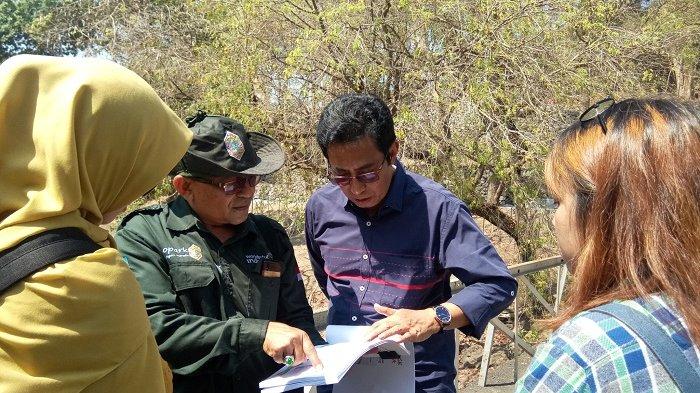BANJARMASINPOST.CO.ID, MARTAPURA - Meratus Geopark has its own features compared to other geoparks in Indonesia. This is due to the higher geosite sprinkling and the age of its formation which is much longer (older).
Sewu Mountain Geopark, which has included in UNESCO Global Geopark (UGG), for example, was only formed 15-20 million years ago. "While Meratus Geopark was formed 200 million years ago", said UPN Yogyakarta Veterans geologist, Jatmika Setyawan, Thursday (10/31/2019).
Sewu Mountains is the name for a series of mountains along the south coast of Gunung Kidul Regency, Wonogiri Regency, to Tulungagung Regency on Java Island. The Sewu mountain range was formed because of the lifting of the seabed thousands of years ago.
So, the Sewu mountains are spread over three provinces namely Gunung Kidul in the Special Region of Jogjakarta. Then Wonogiri in Central Java Province, and Pacitan in East Java Province”, said Jatmika.
Meanwhile, the Meratus mountains are united in one region, namely in the province of South Kalimantan, which is spread over several regencies.
"If the Sewu Mountains lifted limestone, while the rocks were lifted from the ocean floor in South Kalimantan 200 million years ago. That was from the collision between the fractional plates from Australia and the easternmost plates to form the Meratus Mountains range so high and so long," he explained .
Jatmika continued that it was once the ocean floor which then popped to the surface to become the land. "So in terms of age, Meratus is much older than the mountains in the southern region (Java) whose age is between 16 and 15 million years. Until now, the limestone in Java is only 16 million years old, so the age difference is quite large", he said.
80 percent of the Southern Mountains or Gunung Sewu Geopark are limestone and only 3 points are not limestone form, namely in the Ancient Volcano in Nglanggeran.
"Then, the Kalimalang is fossilized. Then, the other Mount Batur is also the ancient three-point volcano that is not limestone", said Jatmika.
Meanwhile, the Meratus Mountains are the oldest ofiolites in Indonesia. It is called Ophiolite because it is in the form of oceanic floor rocks, namely ultramafic language rocks consisting of serpentine and so on.
"That is the evidence of the ocean floor. Then, there are also rocks which are topped in the form of pillow lava which is found also in Sebuku and Pulaulaut. Then, above them, there are sediments deposited in the deep sea namely red limestone which are all now raised to the surface", he explained.
The Sewu Mountain Geosite initially had 17 points and then became 22 village points up to Pacitan and now 38. While in South Kalimantan it has been assessed that there are 67 geosite points.
"So, there are more and more varieties. Therefore, by learning to manage it in the Geopark Sewu, hopefully every Meratus geosite point can be adequately managed so that it can immediately enter the UGG", said Jatmika.
There are many benefits to the South Kalimantan region and people if Meratus Geopark enters the UGG. At least it will reverberate in the ears of the international public and that will directly affect tourist visits.
Jatmika said that there have been 19 national geoparks currently in Indonesia. The first geopark is in Batur Geopark, Bali. Batur Geopark was established as a national geopark in 2010 and in 2012 entered the UGG or Indonesia's first geopark that received international recognition.
(banjarmasinpost.co.id/roy)
This article has been posted on banjarmasinpost.co.id with the title of “Pakar Geologi Sebut Geopark Meratus Tertua di Indonesia dan Terbentuk dari Lantai Dasar Samudera” (Geology Expert Calling the Oldest Meratus Geopark in Indonesia and Formed from the Ground Floor of the Ocean), https://banjarmasin.tribunnews.com/2019/10/31/pakar-geologi-sebut-geopark-meratus-tertua-di-indonesia-dan-terbentuk-dari-lantai-dasar-samudera?page=2.
Author: Idda Royani
Editor: Dido Trio
Jl. SWK 104 (Lingkar Utara), Condongcatur, Yogyakarta 55283 (Kampus Pusat)
Jl. Babarsari 2 Yogyakarta 55281(Kampus Unit II) | Telp. +62 274 486733



